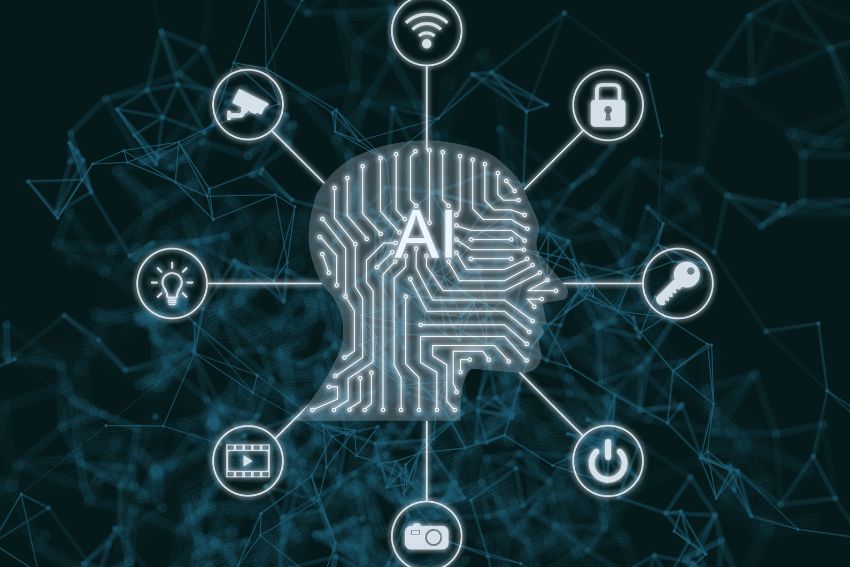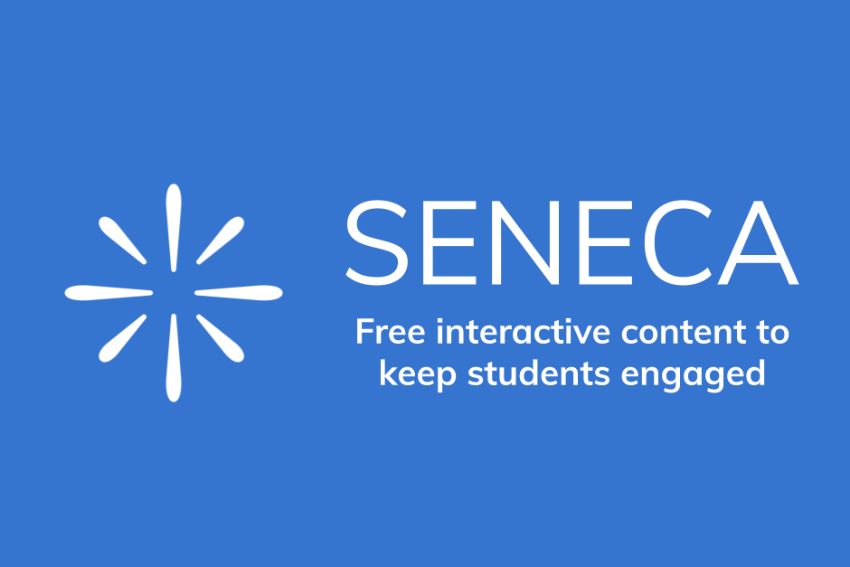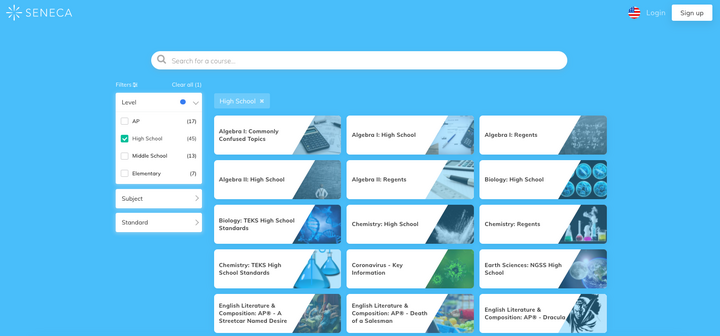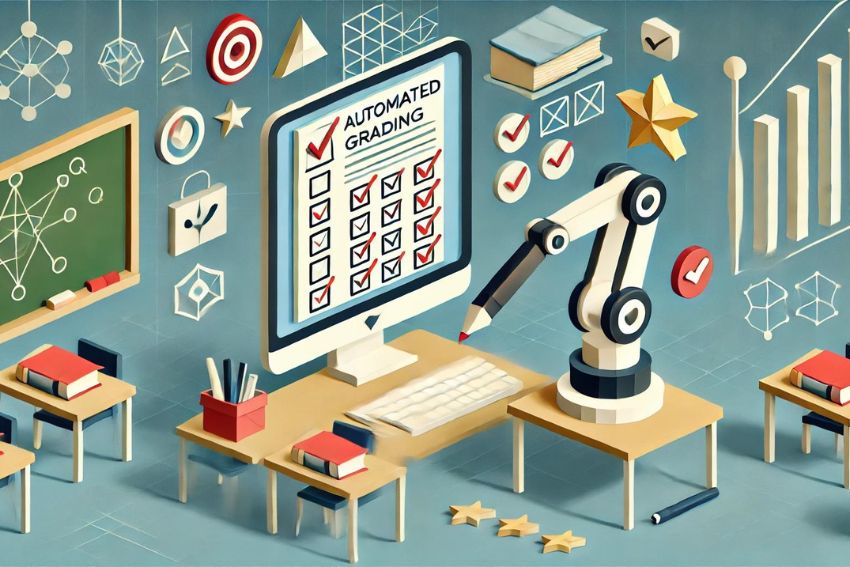The Power of Educational Tech for Faster Learning: Exploring Platforms Like Seneca
Estimated reading time: 9 minutes
Key Takeaways
- Educational technology (edtech), encompassing platforms like Seneca, is transforming learning by offering personalized and efficient study methods.
- Seneca Learning stands out as a premier adaptive online revision platform, widely adopted for its exam-specific resources and user-friendly design.
- The effectiveness of these platforms is rooted in *cognitive science*, leveraging principles such as spaced repetition, active recall, dual coding, and interleaving to deepen understanding.
- Seneca provides extensive free homework and revision tools, empowering both students and teachers with data-driven insights and interactive learning experiences.
- Embracing edtech tools can significantly enhance learning outcomes, making education more accessible, engaging, and aligned with individual needs.
Table of contents
- Introduction
- What is “Educational Tech for Faster Learning”?
- Spotlight on Seneca Learning: A Leading Adaptive Online Revision Platform
- The Science Behind the Speed: How Neuroscience Powers Learning
- Practical Application: Leveraging Free Homework and Revision Tools
- Conclusion
- Frequently Asked Questions
Introduction
In our fast-paced world, the universal desire for *more efficient and effective learning* resonates deeply with students and teachers alike. Everyone seeks smarter ways to improve study outcomes, to not just learn, but to *truly understand* and retain information. Enter the realm of “educational technology”, or edtech – a game-changer in the academic landscape.

Broadly defined, edtech encompasses digital tools designed explicitly to enhance the learning process. From immersive virtual reality experiences that transport learners to ancient civilizations to intelligent tutors that adapt to your every mistake, these innovations are rewriting the rulebook of traditional study methods. Indeed, edtech, including AI-powered apps and adaptive learning platforms, is fast becoming central to classrooms and independent study, profoundly rewriting traditional study methods.
The true magic of these new tools lies in their ability to achieve faster and deeper learning by harnessing the power of *neuroscience* and *personalizing* the learning experience. They move beyond the one-size-fits-all approach, recognizing that every brain learns differently. This blog post sets its focus firmly on exploring how such platforms, particularly **Seneca Learning**, exemplify this transformative shift. We’ll delve into the significant “Seneca Learning benefits for students” and its prominent role as a leading “adaptive online revision platform.” Prepare to discover how platforms like Seneca Learning are at the forefront of this change, making learning both quicker and deeper for students across the globe.

What is “Educational Tech for Faster Learning”?
At its core, “educational technology” (edtech) refers to any digital tool or resource specifically engineered to improve the learning process. This broad category spans a vast array of innovations, from simple educational apps to sophisticated interactive platforms, and even advanced AI-powered tools. The overarching goal is to make learning more accessible, engaging, and, crucially, more effective.
When we talk about “educational tech for faster learning,” we’re specifically looking at how these digital aids facilitate quicker comprehension and more robust retention through several ingenious mechanisms:
-
Personalization: One of the most powerful features of modern edtech. Imagine a tutor who knows your exact strengths, pinpoint weaknesses, and preferred learning pace. Edtech platforms mimic this, tailoring content dynamically to each learner’s individual profile. This allows the platform to target knowledge gaps *as they arise*, meaning you’re not wasting time on what you already know, but rather focusing precisely on areas needing improvement. This individualized approach ensures that every study minute is maximized for impact.
-
Efficiency: Time is a precious commodity, especially for students. Edtech significantly optimizes study time through automated features. Instant feedback on quizzes, for instance, means you immediately know where you went wrong, allowing for rapid correction. Adaptive questioning algorithms, like those found in Seneca, continuously assess your understanding and adjust the difficulty and focus of subsequent questions, ensuring you’re always challenged at the right level. This means you spend less time re-reading material you’ve mastered and more time solidifying concepts you’re struggling with. These smart systems truly optimize study time by focusing on areas needing improvement.
-
Engagement: Traditional learning methods can sometimes feel passive. Edtech, however, is designed to keep students motivated and actively participating. Interactive elements, such as gamification features (points, badges, leaderboards), provide immediate gratification and a sense of progress. Engaging quizzes transform monotonous review into an active challenge. This interactivity fosters a deeper connection with the material, turning what might otherwise be a chore into an enjoyable and stimulating experience.
-
Accessibility: The digital nature of edtech shatters geographical and temporal barriers. Learners can study anytime, anywhere, using readily available computers or mobile devices. This removes traditional obstacles to education, democratizing access to high-quality learning resources. Whether you’re commuting, at home, or in a library, your learning platform is just a few clicks away. This flexibility is a significant advantage, as highlighted by various reviews of platforms like Seneca Learning – source: https://edumentors.co.uk/blog/seneca-learning-review-is-it-helpful/ and https://sciencetltoolkit.wordpress.com/category/seneca/.

By integrating these mechanisms, educational technology doesn’t just make learning *easier*; it makes it profoundly *smarter* and more attuned to the individual’s needs, paving the way for truly faster and more effective knowledge acquisition.
Spotlight on Seneca Learning: A Leading Adaptive Online Revision Platform
When discussing the transformative power of edtech, Seneca Learning invariably rises to the forefront as a premier example of an “adaptive online revision platform.” It beautifully embodies how technology can revolutionize academic achievement. Its widespread adoption speaks volumes, with over *3.5 million users* benefiting from its comprehensive, exam-specific resources that span everything from primary school subjects right through to challenging A-levels – source: https://sciencetltoolkit.wordpress.com/category/seneca/. Seneca isn’t just another online quiz platform; it’s a meticulously designed learning ecosystem built on proven scientific principles.
Let’s unpack Seneca Learning’s core functionality and key features that make it such a potent tool for students:
-
Adaptive Learning: This is arguably Seneca’s most significant differentiator. The platform doesn’t just serve static content. Instead, it dynamically adjusts what students see and how they interact with it, focusing intently on their weak spots and reinforcing strengths based on their *real-time performance*. If you struggle with a particular concept, Seneca will present it in different formats or re-test you on it more frequently until mastery is achieved. Conversely, if you ace a topic, it will move you efficiently to new material, ensuring optimal challenge and engagement.

-
Condensed Content: In an era of information overload, Seneca champions efficiency. It meticulously streamlines information, providing only what students *truly need* for their exams. This focused approach cuts through the clutter found in bulky textbooks and traditional revision guides, significantly improving study efficiency – source: https://edumentors.co.uk/blog/seneca-learning-review-is-it-helpful/. Students can cover more ground in less time, confident that they are focusing on high-yield information.
-
Progress Tracking (for Teachers): Seneca isn’t just for students; it’s a powerful ally for educators too. Teachers can monitor student progress at a granular level, set assignments tailored to specific learning objectives, and receive detailed, actionable feedback. This functionality saves invaluable time on administrative tasks like marking and allows teachers to provide highly targeted support precisely where needed, transforming their ability to differentiate instruction – source: https://edumentors.co.uk/blog/seneca-learning-review-is-it-helpful/, http://help.senecalearning.com/en/articles/4427471-what-are-the-benefits-of-premium-for-teachers, and https://senecalearning.com/en-GB/blog/how-can-seneca-premium-benefit-schools/.

-
Accessibility: One of Seneca’s most commendable attributes is its commitment to accessibility. Both its website and mobile applications make its powerful learning tools easily available for free, ensuring that high-quality revision is not a privilege but a right for all students. While additional, enhanced resources are offered via Premium subscriptions, the free platform already provides a robust and highly effective learning experience – source: https://sciencetltoolkit.wordpress.com/category/seneca/.
Now, let’s transition to the specific “Seneca Learning benefits for students” that have garnered such widespread acclaim:
-
Students can reportedly learn up to **2x faster** than with traditional revision guides. This remarkable benefit is directly attributed to Seneca’s deep integration of cognitive science techniques, which we’ll explore in the next section – source: https://edumentors.co.uk/blog/seneca-learning-review-is-it-helpful/. This isn’t just anecdotal; it’s backed by the scientific principles that underpin effective learning.
-
Immediate feedback and interactive elements fundamentally transform revision from a passive activity into an active, engaging, and highly effective one. This constant loop of input-response-feedback fosters deeper engagement and significantly enhances retention – source: https://edumentors.co.uk/blog/seneca-learning-review-is-it-helpful/. Learning becomes less about rote memorization and more about active understanding.
-
The free access ensures that advanced learning tools are widely available to a broad student demographic, leveling the playing field and providing opportunities for academic excellence to many who might otherwise be unable to access such sophisticated resources – source: https://sciencetltoolkit.wordpress.com/category/seneca/. This commitment to equitable access is a cornerstone of Seneca’s mission.
Seneca Learning truly stands as a beacon in the edtech landscape, demonstrating how intelligent design, rooted in educational psychology and technological innovation, can profoundly impact student success.
The Science Behind the Speed: How Neuroscience Powers Learning
The incredible efficiency and effectiveness of platforms like Seneca Learning are not based on mere guesswork or trendy features; they are meticulously built upon established “cognitive science” principles. These are the very foundations of how the human brain processes, stores, and retrieves information. By leveraging these insights, edtech platforms transform into true “neuroscience-powered learning apps” that drive faster, deeper, and more sustainable learning outcomes. Let’s explore these pivotal principles:

-
Spaced Repetition: This principle dictates that revisiting information at optimized, increasing intervals helps lock knowledge into long-term memory far more effectively than cramming. Think about it: if you study something today, you might forget it in a few days. But if you review it tomorrow, then in three days, then a week, then a month, your brain constantly reinforces the neural pathways associated with that information. Seneca’s algorithms are designed to automatically re-present material you’ve previously encountered at precisely these optimal intervals, ensuring that you recall information just as you’re about to forget it. This strategic timing maximizes retention and minimizes the need for frantic, last-minute cramming.
-
Active Recall: This is a cornerstone of effective learning, yet often overlooked in traditional study. Active recall is the process where students are prompted to retrieve information from memory without external cues. Instead of passively re-reading notes or highlighting text, you are actively trying to remember the answer to a question or explain a concept in your own words. Think of it like flexing a muscle – the more you try to retrieve information, the stronger that memory trace becomes. Seneca employs this extensively through its interactive quizzes and question formats. Every time you answer a question without looking at the notes, you’re practicing active recall, which significantly strengthens retention compared to passive re-reading or reviewing. This active retrieval process is far more powerful for building lasting knowledge.
-
Dual Coding: Our brains process information more effectively when it’s presented in multiple formats. Dual coding is the principle of presenting information using both words and visuals simultaneously. This means combining text alongside diagrams, illustrations, or videos. When you see an image and read a description, your brain creates two distinct memory pathways for that piece of information – one for the visual and one for the verbal. If one pathway is blocked, you can still access the information via the other. Seneca incorporates this by pairing concise text explanations with relevant images, graphs, and even short animations, aiding understanding and recall by creating these multiple, robust memory pathways.

-
Interleaving: Many students prefer to “block” their study, focusing intensely on one topic for an extended period before moving to the next. However, cognitive science suggests that interleaving—mixing different topics, subjects, or types of problems during study sessions—is actually more effective. While it might feel harder in the moment because your brain has to constantly switch gears, this approach fosters flexible thinking and better memory retention compared to blocking. It forces your brain to discriminate between concepts, strengthening your ability to apply knowledge in varied contexts. Seneca subtly integrates interleaving by presenting questions from slightly different but related sub-topics within a broader course, encouraging you to draw connections and adapt your thinking – source: https://edumentors.co.uk/blog/seneca-learning-review-is-it-helpful/.
By meticulously integrating these scientifically backed approaches, platforms like Seneca are not just tools for convenience; they are finely tuned instruments designed to optimize your brain’s natural learning mechanisms. This direct application of neuroscience is what truly enables “faster learning” and a deeper, more robust understanding of the material, making your study sessions significantly more productive and your knowledge more enduring.
Practical Application: Leveraging Free Homework and Revision Tools
The theoretical benefits of edtech become tangible through practical application. Seneca Learning’s “free homework and revision tools” offer immense accessibility and utility for both students striving for academic excellence and teachers seeking to optimize their pedagogical strategies. This practical integration transforms daily study and classroom management.
For teachers, Seneca provides a robust suite of features that seamlessly integrate into their workflow, enhancing efficiency and enabling highly targeted support:
-
Teachers can effortlessly assign revision tasks, homework, or even entire courses to individual students or whole classes. This allows for personalized learning paths within a broader curriculum. They can then monitor outcomes with precision, seeing which students are engaging, which concepts are causing widespread difficulty, and where individual intervention might be needed – source: https://edumentors.co.uk/blog/seneca-learning-review-is-it-helpful/ and https://sciencetltoolkit.wordpress.com/category/seneca/.
-
The platform’s automated marking and real-time analytics are invaluable. Instead of spending hours grading, teachers receive instant, granular data highlighting student progress and pinpointing exact knowledge gaps. This immediate insight frees up teacher time, allowing them to focus on teaching, providing tailored feedback, and offering targeted support efficiently to students who need it most – source: http://help.senecalearning.com/en/articles/4427471-what-are-the-benefits-of-premium-for-teachers. It transforms data into actionable pedagogical strategies.

Students, on the other hand, can integrate Seneca into their daily study routine across a diverse range of subjects and academic levels, from core primary subjects to complex A-level material. The platform makes independent study not just effective, but genuinely engaging:
-
Students can utilize interactive courses that break down complex topics into digestible, engaging segments. The memory-boosting activities, designed around the cognitive science principles discussed earlier, make study sessions highly productive, ensuring that time spent on the platform translates into durable knowledge – source: https://edumentors.co.uk/blog/seneca-learning-review-is-it-helpful/ and https://sciencetltoolkit.wordpress.com/category/seneca/.
-
It’s important to reiterate that while Premium features unlock additional content and even more personalized learning tools, the free platform already offers a substantial array of resources. These are more than sufficient for effective learning and provide a robust foundation for students committed to improving their academic performance – source: https://senecalearning.com/en-GB/blog/how-can-seneca-premium-benefit-schools/ and https://sciencetltoolkit.wordpress.com/category/seneca/. The core learning mechanisms are freely available to all.
To truly maximize the benefits of these “free homework and revision tools” and enhance your experience with “educational tech for faster learning” and subject mastery, consider these actionable tips for maximizing benefits:
-
Schedule frequent, short study sessions: Instead of long, infrequent cramming, commit to shorter bursts of study on Seneca daily or every other day. This aligns perfectly with spaced repetition principles, leading to optimal long-term retention. Even 15-20 minutes focused sessions can make a significant difference over time.
-
Actively use the platform’s immediate feedback: Don’t just click through questions. Pay close attention to the feedback provided, especially for incorrect answers. Use this information to identify and focus your revision efforts precisely on weak areas. Seneca highlights where you went wrong; learn from it!
-
Combine subjects or topics in a single sitting: Leverage the power of interleaving. If you’re studying for multiple exams, spend a short period on one subject, then switch to another, and perhaps a third, before circling back. This enhances understanding and memory transfer across disciplines, making your knowledge more flexible and robust.
-
For exam preparation, strategically use Seneca’s tailored assignments and memory techniques: As exams approach, utilize the platform’s ability to create custom revision paths for you. Focus on areas where you consistently make errors, and lean into the active recall and spaced repetition features to solidify knowledge. Use the predictive insights to prioritize your efforts for maximum impact.
By consciously applying these strategies, students can transform their academic journey, using Seneca not just as a tool, but as a dynamic partner in achieving subject mastery and academic success.
Conclusion
The journey through the landscape of “educational tech for faster learning” reveals a profound shift in how we approach education. No longer confined to traditional textbooks and static lectures, learning is now dynamic, personalized, and deeply informed by scientific understanding of the brain. Educational technology has cemented its pivotal role in modern education, offering pathways to efficiency and engagement previously unimaginable.
Throughout this exploration, we’ve seen how **Seneca Learning** exemplifies the very best of what edtech has to offer. Its significant “Seneca Learning benefits for students” are manifold: from facilitating faster learning and more effective revision to providing invaluable, data-driven support that adapts to individual needs. Seneca’s intelligent application of sophisticated cognitive science principles — including spaced repetition, active recall, dual coding, and interleaving — positions it as a leading “neuroscience-powered learning app” and an exemplary “adaptive online revision platform” in the global educational sphere – source: https://edumentors.co.uk/blog/seneca-learning-review-is-it-helpful/, https://senecalearning.com/en-GB/blog/how-can-seneca-premium-benefit-schools/, and https://sciencetltoolkit.wordpress.com/category/seneca/.
The rise of platforms like Seneca signifies more than just technological advancement; it represents a commitment to optimizing the learning experience for every individual. They empower students to take control of their education, providing tools that make complex subjects manageable and revision truly productive. We encourage you to explore and adopt these innovative educational tools. By embracing the power of educational technology, you can unlock your full learning potential and truly transform your educational experience, preparing yourself not just for exams, but for a lifetime of continuous, effective learning.
Frequently Asked Questions
-
What is educational technology (edtech)?
Educational technology (edtech) refers to the use of digital tools and resources to enhance teaching and learning. This can include everything from interactive whiteboards and online learning platforms to AI-powered tutors and virtual reality simulations designed to make education more engaging, accessible, and effective.
-
How does Seneca Learning help students learn faster?
Seneca Learning employs principles of cognitive science, such as spaced repetition, active recall, dual coding, and interleaving. These scientifically backed methods help students retain information more efficiently, understand concepts more deeply, and reduce the need for last-minute cramming, thus accelerating the learning process.
-
Is Seneca Learning suitable for all academic levels?
Yes, Seneca Learning offers a wide range of courses and resources suitable for various academic levels, from primary school students (KS2) right through to A-levels and beyond. Its content is designed to be curriculum-aligned and adaptive to individual learning needs.
-
Are there free resources available on Seneca Learning?
Absolutely! Seneca Learning provides extensive free homework and revision tools, including interactive courses and quizzes covering a broad spectrum of subjects. While Premium subscriptions offer additional features and content, the core adaptive learning experience is freely accessible to all users.
-
How can teachers use Seneca Learning to support their students?
Teachers can use Seneca Learning to assign homework, track student progress in real-time, identify knowledge gaps across the class, and provide targeted support. The platform’s analytics save teachers time on marking and allow them to focus on personalized instruction, making classroom management and differentiation more efficient.






